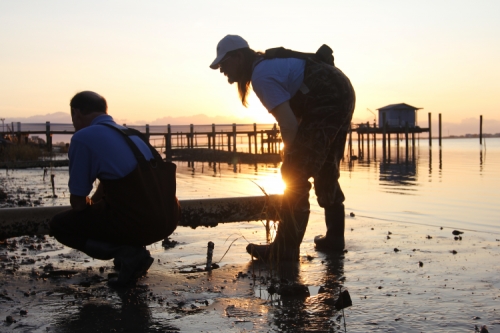When a child is born with an obstructed airway, physicians can intervene with different types of surgery. But to decide whether to operate and when, and which procedures to offer, doctors must make educated guesses, relying heavily on their own experience.
“Typically it’s very young children with these problems, so the challenge in deciding the best therapy is: do we allow the airway to grow first, or do we surgically intervene now? It’s really up to the individual surgeon or pediatric pulmonologist caring for the child,” says Stephanie Davis, chief of pediatric pulmonology in the UNC School of Medicine.
But, every day, computer scientists, physicists and mathematicians precisely model how air flows in constricted spaces. Why can’t they do that to predict when surgery will help children with these conditions? Davis and other physicians from the School of Medicine are working with a multidisciplinary team from the College of Arts and Sciences to do just that.
Funded by $3.6 million from the National Institutes of Health, the Pediatric Airways Project is creating a computer-based workbench that doctors can use to predict the outcome of various surgical options, based on computed tomography (CT) images and other information about their patients. CT is a powerful technique for producing 2-D and 3-D cross-sectional images of an object from flat X-ray images. For now, the project will focus on modeling airways of children up to 10 years old with two conditions — Pierre Robin sequence (characterized by small jaw and posterior displacement of the tongue, causing airway obstruction) and subglottic stenosis (narrowing of the airway below the vocal cords).
The scientists hope to equip pediatric pulmonologists and otolaryngologists/head and neck surgeons with a simulation tool like those used by aeronautics engineers.
“When engineers make a change in the aircraft, they have first very carefully simulated the results, so they understand what effect that will have on performance,” says Russ Taylor, research professor of computer science, physics and astronomy, and applied and materials sciences. “We want to develop a similar tool so that [medical professionals] can ask the computer, ‘if this is the geometry of the airway that we know from CT scans, and we adjust it this way with surgery, how is that going to affect the breathing within this infant?’”
This pediatric airway model is possible only because of a large collaboration that began in 2003 — the Virtual Lung Project. Initially started by Richard Superfine, Taylor-Williams Distinguished Professor in the department of physics and astronomy, Gregory Forest, Grant Dahlstrom Distinguished Professor of Mathematics and Biomedical Engineering, and Richard Boucher, Kenan Professor of Medicine and director of UNC’s Cystic Fibrosis Center, the virtual lung is a huge undertaking. The researchers are trying to model how mucus clearance and other functions work deep in the lung, down to the level of the cell, with the goal of ultimately developing new treatments for lung disorders such as cystic fibrosis.
Superfine says that half the challenge of such collaborations is teaching scientists to understand each other’s languages, so in this way the pediatric airways project has a head start.
“We’re applying the strengths of the community we’ve developed for the virtual lung to this closely related but new problem,” Superfine says.
The Pediatric Airways model will combine existing virtual-reality and airflow simulation technologies in a workbench where physicians can see, touch and hear how different surgical procedures will affect the airflow of each individual patient. The team will work with some newer imaging tools, such as optical coherence tomography (OCT), a technique which is similar to ultrasound but uses light waves rather than sound waves and produces images of a finer resolution.
The project will use data and images from actual pediatric patients, but treatment decisions will not be made based on the model during this initial period. The researchers will spend four years developing and validating the model, says Carlton Zdanski, chief of pediatric otolaryngology/head and neck surgery and surgical director of the North Carolina Children’s Airway Center.
“We hope that this tool can help us make better choices for children with these conditions in the future,” Davis says.
Editor’s note: This story by Angela Spivey ’90 is part of a package of stories on “Creative Collaborations” in the College of Arts and Sciences featured in the spring ’11 Carolina Arts and Sciences magazine.
Read more “Creative Collaborations” stories: Breathing Relief, Languages Across the Curriculum, Mentoring Chemistry, UNC-Duke N.C. Poverty Project, Globe-Trotting for Tardigrades, Real-Life Ethics, Electro-Acoustic Music, Tangled Up in Blues and Making Waves.




